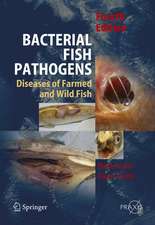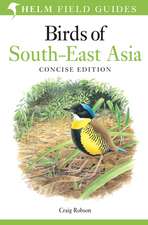The Coat Colors of Mice: A Model for Mammalian Gene Action and Interaction
Autor W.K. Silversen Limba Engleză Paperback – 12 oct 2011
Preț: 731.73 lei
Preț vechi: 892.35 lei
-18% Nou
Puncte Express: 1098
Preț estimativ în valută:
140.02€ • 144.45$ • 116.84£
140.02€ • 144.45$ • 116.84£
Carte tipărită la comandă
Livrare economică 26 martie-09 aprilie
Preluare comenzi: 021 569.72.76
Specificații
ISBN-13: 9781461261667
ISBN-10: 146126166X
Pagini: 404
Ilustrații: XIV, 382 p.
Dimensiuni: 155 x 235 x 21 mm
Greutate: 0.56 kg
Ediția:Softcover reprint of the original 1st ed. 1979
Editura: Springer
Colecția Springer
Locul publicării:New York, NY, United States
ISBN-10: 146126166X
Pagini: 404
Ilustrații: XIV, 382 p.
Dimensiuni: 155 x 235 x 21 mm
Greutate: 0.56 kg
Ediția:Softcover reprint of the original 1st ed. 1979
Editura: Springer
Colecția Springer
Locul publicării:New York, NY, United States
Public țintă
ResearchCuprins
1: Introduction.- I. The Coat of the Mouse and Its Development.- 2: The Agouti and Extension Series of Alleles, Umbrous, and Sable.- I. The Agouti Locus.- II. The Extension Series of Alleles.- III. “Umbrous” and Sable Determinants.- 3: The ft-Locus and c (Albino) Series of Alleles.- I. The b-Locus.- II. The c (Albino) Series of Alleles.- 4: Dilute and Leaden, the p-Locus, Ruby-Eye, and Ruby-Eye-2.- I. Dilute (d) and Leaden (In).- II. The p-Locus (Pink-Eyed Dilution).- III. Ruby-Eye (ru).- IV. Ruby-Eye-2 (ru-2).- 5: Grey-Lethal, Grizzled, Mocha, Pallid, Muted, Misty, and Pearl.- I. Grey-Lethal (gl).- II. Grizzled (gr).- III. Mocha (mh).- IV. Pallid (pa).- V. Muted (mu).- VI. Misty (m).- VII. Pearl (pe).- 6: Beige, Silver, Greying with Age, and Other Determinants.- I. Beige (bg).- II. Silver (si).- III. Greying with Age (Ga).- IV. Other Determinants.- 7: The Pigment Patterns of Allophenic Mice and Their Significance.- I. The Standard Pattern.- II. Modified Patterns.- III. Inception of Gene Activity.- IV. Expression of Albinism and Occurrence of Bicolored Hairs.- V. Hair Follicle Clones.- VI. Expression of Allophenic Patterns in Single Genotype Mice.- VII. Allophenic Patterns and the Etiology of White Spotting.- 8: X-Linked Determinants.- I. X-Chromosome Inactivation and the Allophenic Model.- II. The Mottled Locus.- III. Yellow Mottling (Ym) and Pewter (Pew).- 9: White Spotting: Piebald, Lethal Spotting, and Belted.- I. Introduction.- II. Piebald Alleles.- III. Lethal Spotting (Is).- IV. Belted.- 10: Dominant Spotting, Patch, and Rump-White.- I. Dominant Spotting (W-Locus).- II. Patch (Ph) and Rump-White (Rw).- 11: Steel, Flexed-Tailed, Splotch, and Varitint-Waddler.- I. Steel (SI).- II. Flexed-Tailed (f).- III. Splotch (Sp) and Delayed Splotch (Spd).- IV.Varitint-Waddler (Va) and Varitint-Waddler-J (Vaj).- 12: Microphthalmia and Other Considerations.- I. Microphthalmia Locus.- II. Other Determinants Associated with White Spotting.- III. Influence of Some Coat-Color Determinants on White Spotting.- IV. Mutation Rates.- References.- Author Index.












